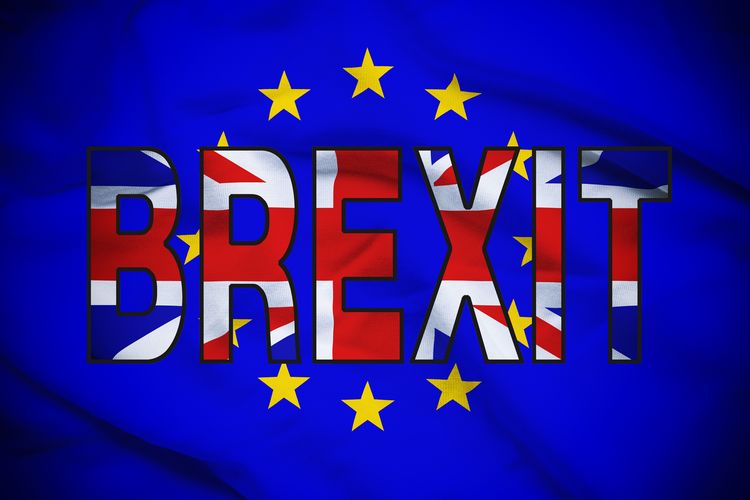Gilt yields have been highly volatile since the Brexit vote in June and are likely to remain so as negotiations take place this year and uncertainty about the UK economy continues.
Ten-year Gilt yields dropped by 20bp to 1.08% on June 24 last year – the day after the Brexit vote – and troughed at a historic low of 0.51% on August 12. Many investors turned to Gilts as a ‘safe haven’ asset in a belief that Brexit spelt bad news for the British economy.
At the start of August, the Bank of England also lowered interest rates to a record low of 0.25% from 0.50% because it felt the prospects for the British economy had deteriorated.
“The main impact of Brexit has been that it has depressed interest rates for a longer period than people expected,” said Laith Khalaf, a senior analyst at Hargreaves Lansdown, the financial adviser. “This was reflected in lower Gilt yields. Immediately after the Brexit vote, the prospects for the British economy looked pretty dim and a flight to safety also took place.”
Investors believed that a so-called ‘hard’ Brexit would hit the economy and thus tax revenues; they downgraded their assessment of the UK’s creditworthiness.
However, 10-year Gilt yields then started a slow ascent until they peaked on January 26 at 1.51%, but fell back again by 1.21% by March 15.
The rise in yields until the end of January reflected the country’s improving economic outlook. At the start of February, the Bank of England increased its forecast for economic growth to 2% this year from its 1.4% projection back in November.
Sterling’s 15% depreciation in trade-weighted terms last year has also prompted a rise in inflationary expectations. In December, consumer price index inflation rose to 1.6% and the Bank of England’s monetary policy committee now expects inflation to reach 2.8% in the first half of next year, before falling back to 2.4% in three years’ time.
Higher inflationary expectations should eventually lead to a rise in interest rates and Gilt yields. But, at the moment, other economic factors exist, depressing the economic outlook slightly and keeping yields lower.
“The Bank of England thought that people’s animal spirits would be dampened following the Brexit result,” said Andy Chaytor, head of European rates strategy at Nomura. “In the end, that did not happen. At the end of last year, we also saw non-resident demand for Gilts pick up. The UK was seen as a stronger safe haven and investors’ decisions were strongly affected by elections in the United States and Donald Trump’s victory.
“Looking ahead, there are a lot of unknowns that could affect Gilt yields. The results of the French presidential elections could have an impact and there is a big question mark around the UK economy as it leaves a much bigger economic trading bloc.”
Non-resident purchases of Gilts have been highly volatile during the past year. In August, net purchases amounted to £1.7bn but this rose to a £13.2bn in September, £10.5bn in October and £15.5bn in November, before net purchases turned negative to minus £2.9bn in December.
Non-resident purchases were not only affected by the Brexit vote but by political events in other parts of the world, including the US elections.
The 30bp drop in yields since the end of January reflects other economic news indicating that the economic picture is deteriorating slightly. Consumer spending has slowed down somewhat. This has encouraged investors to think that the low interest rate period could last longer, depressing yields a little.
International factors
A number of factors are expected to impact Gilt yields this year, including European elections, US economic growth, the rough and tumble of the Brexit negotiations, and the course of the British economy.
Currently, bond yields in Germany and France are lower than in the UK. The 10-year German Bund was yielding 0.39% on March 15, while the 10-year French government OATs were at 0.98%.
The first round of the French presidential election take place on April 23 and the final round occurs on May 7. Most analysts believe that Marine Le Pen, president of the right-wing Front National party, will not win the election. However, her victory would send shockwaves through the international bond markets, as she is committed to withdrawing France from the euro. Her success would make Gilts a safe haven.
“Political risk exists in the eurozone area,” said Sam Hill, senior UK economist at RBC Capital Markets. “This could start to change investors’ perceptions about safe havens and which country is a better one. However, the Bund market continues to be very well supported and is reinforced by Germany’s stronger fiscal stance.”
Negotiations key
The Brexit negotiations will start in earnest when Theresa May strikes Article 50 on March 29. Gilt yields are likely to reflect the success – or otherwise – of the discussions. Most analysts expect the talks to be tough and that the chief European negotiator, Michel Barnier, could present the UK with an ‘exit bill’ of up to £50bn before trade talks can even begin.
Gilt yields are likely to reflect the likelihood of the UK striking a trade deal with the European Union. If the negotiations go badly, the economic outlook will remain negative, depressing interest rates and yields.
However, investors are likely to react warmly if it seems that the UK can some how remain part of – or have access to – the European single market. Signs of a trade deal with the United States and other major economies could also have a positive impact on Gilts.
The chances of an another independence referendum taking place in Scotland is also likely to have an adverse effect on the market, especially if there is a strong possibility of the Scots voting in favour of independence.
Signs that the UK economy is holding up could improve expectations about interest rate rises and inflate Gilt yields. One of the most important indicators will be average weekly earnings produced by the Office for National Statistics. On January 17, wages were showing a 1.7% year-on-year increase, down from 2.9% on November 16.
“The Gilt market is in a holding pattern at the moment,” said Kit Juckes, a macro strategist at Societe Generale. “Most people think that Brexit will have a negative impact. Higher inflation is likely to squeeze real incomes. Wage growth in the UK has not really picked up as the labour market has become tighter. The recent improvement in economic growth has largely been on the back of increased consumer borrowing, but that is not sustainable.”
Treasury decoupling
Until recently, there has been a positive correlation between 10-year US Treasury and Gilt yields. But, recently, a divergence has emerged, showing that the Gilt market is now mainly impacted by other factors.
For example, on March 9, there was a record gap of 1.43% between 10-year US Treasuries and Gilts (as recently as August 2014, they were on a par).
On March 15, the Federal Reserve raised its target range for interest rates to between 0.75% and 1%, the second 0.25% rise in three months and the third rise since the international financial crisis. The latest increase reflected job gains in that country, a rise in consumer confidence, and inflation firming up to around the Fed’s target level of 2%.
The 10-year Treasury was yielding 2.52% on March 15, an increase of around 70bp since Donald Trump’s election in November. Yields on two-year Treasuries have climbed to a seven-year high on expectations of faster rate hikes.
“There are similarities between the British and American economies,” said Mitul Patel, head of interest rates at Henderson Global Investors. “Unemployment is low in both countries. Inflation is slightly higher in the UK. However, one big difference is the fiscal stimulus proposed by Trump in the US. The UK does not have any equivalent.
“Most economists expect US economic growth to pick up this year, while they expect the British economy to slow down. This is reflected in their different outlooks for interest rates and bond yields. But more aggressive rate moves in the US could start to have an impact on Gilts.”
The better-than-expected economic figures since the UK voted to leave the EU mean that government revenues from taxation have increased. Philip Hammond, the Chancellor of the Exchequer, said in the spring budget that the deficit is expected to fall from a peak of 88.8% of economic output next year to 79.8% in 2021/22.
For the tax year to 2017, the government’s Debt Management Office plans to keep Gilt sales at £146.5bn, but this is expected to drop to around to £115bn for the tax year to 2018. Analysts say that the Budget shows that the government is serious about getting the deficit down and that lower debt issuance will be a boon to longer term Gilts.
The Gilt market has been highly volatile during the past year and is likely to remain so because of the considerable political and economic uncertainty that the UK faces.
To see the digital version of this roundtable, please click here
To purchase printed copies or a PDF of this report, please email gloria.balbastro@tr.com



